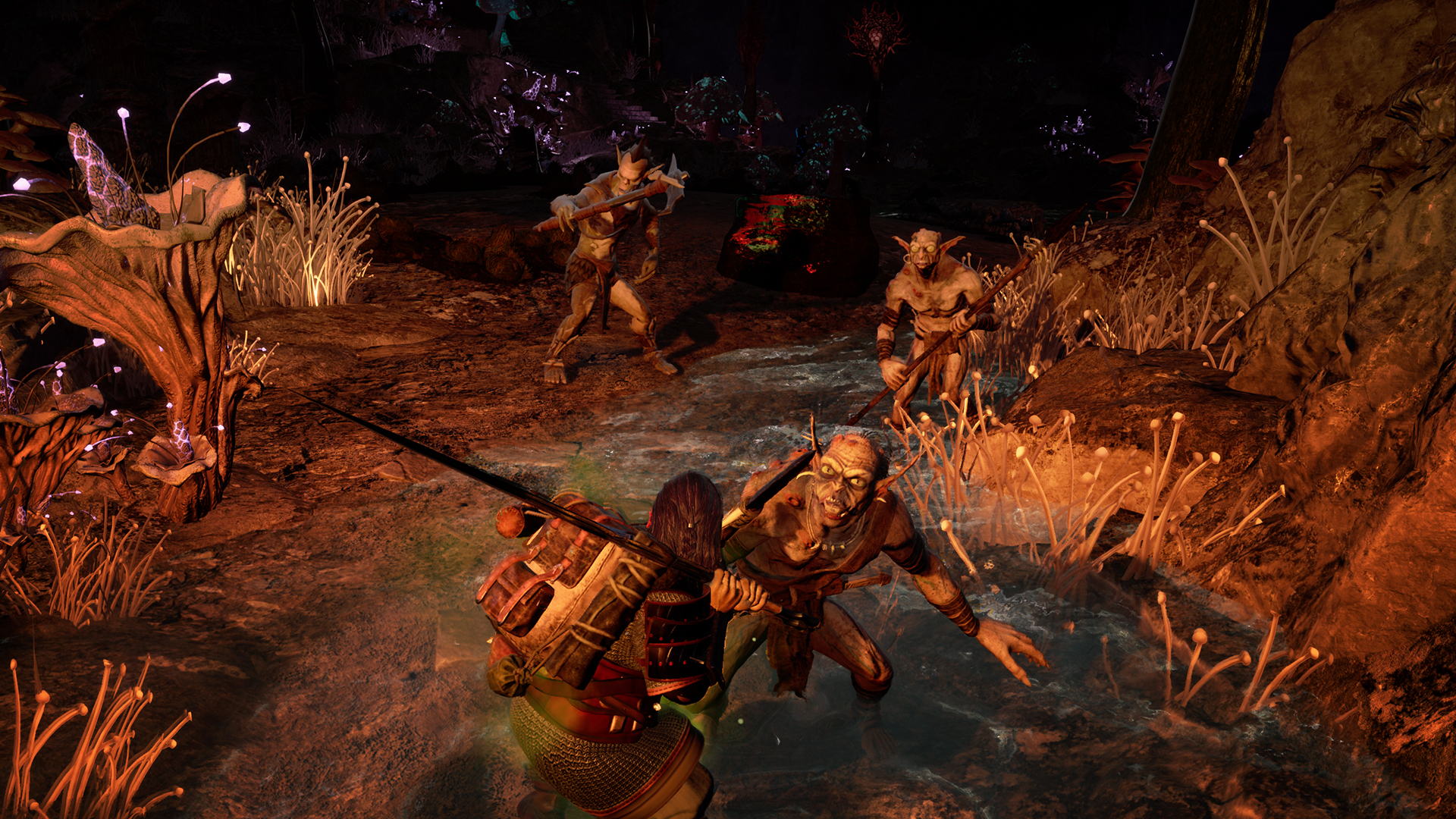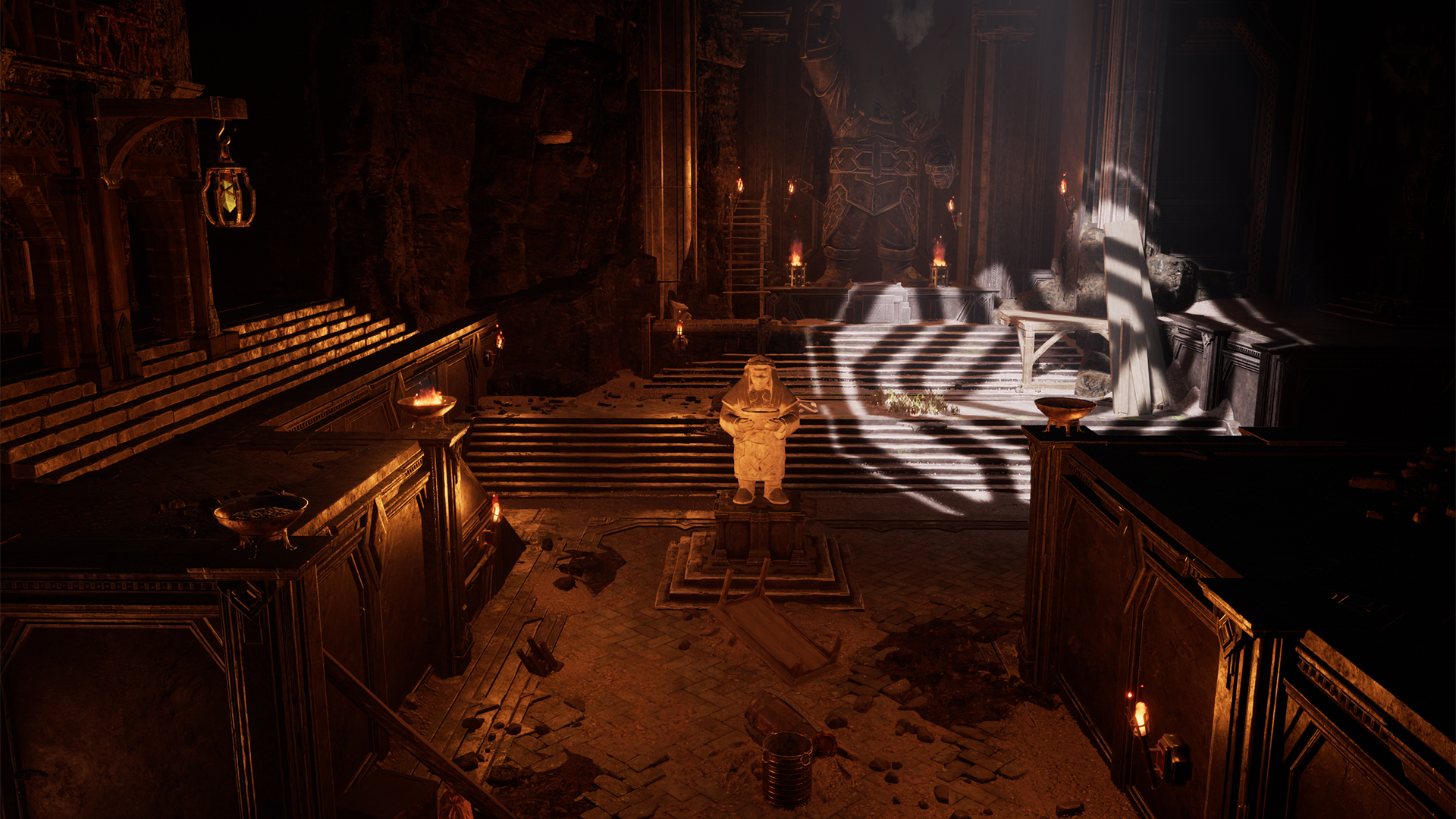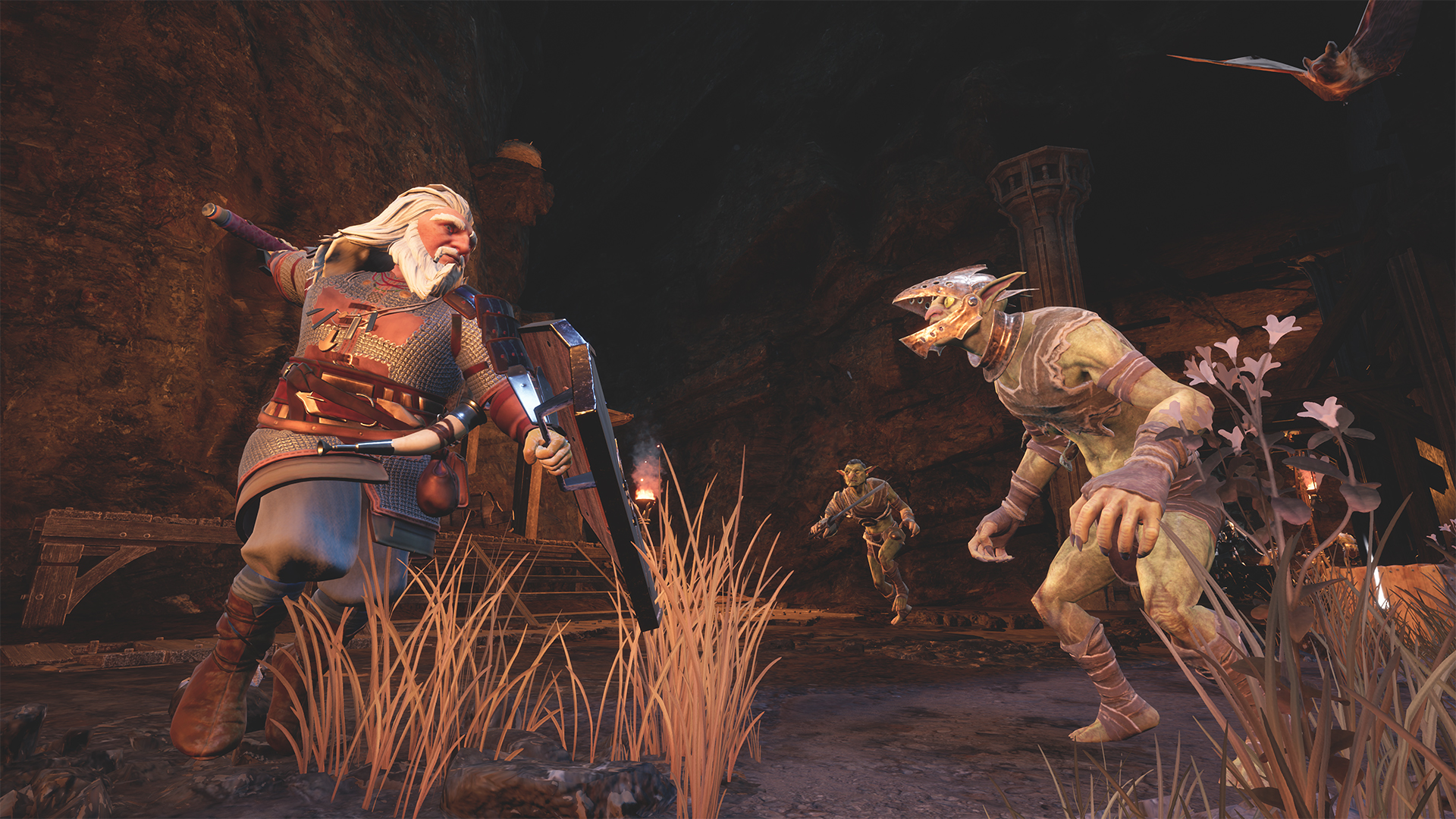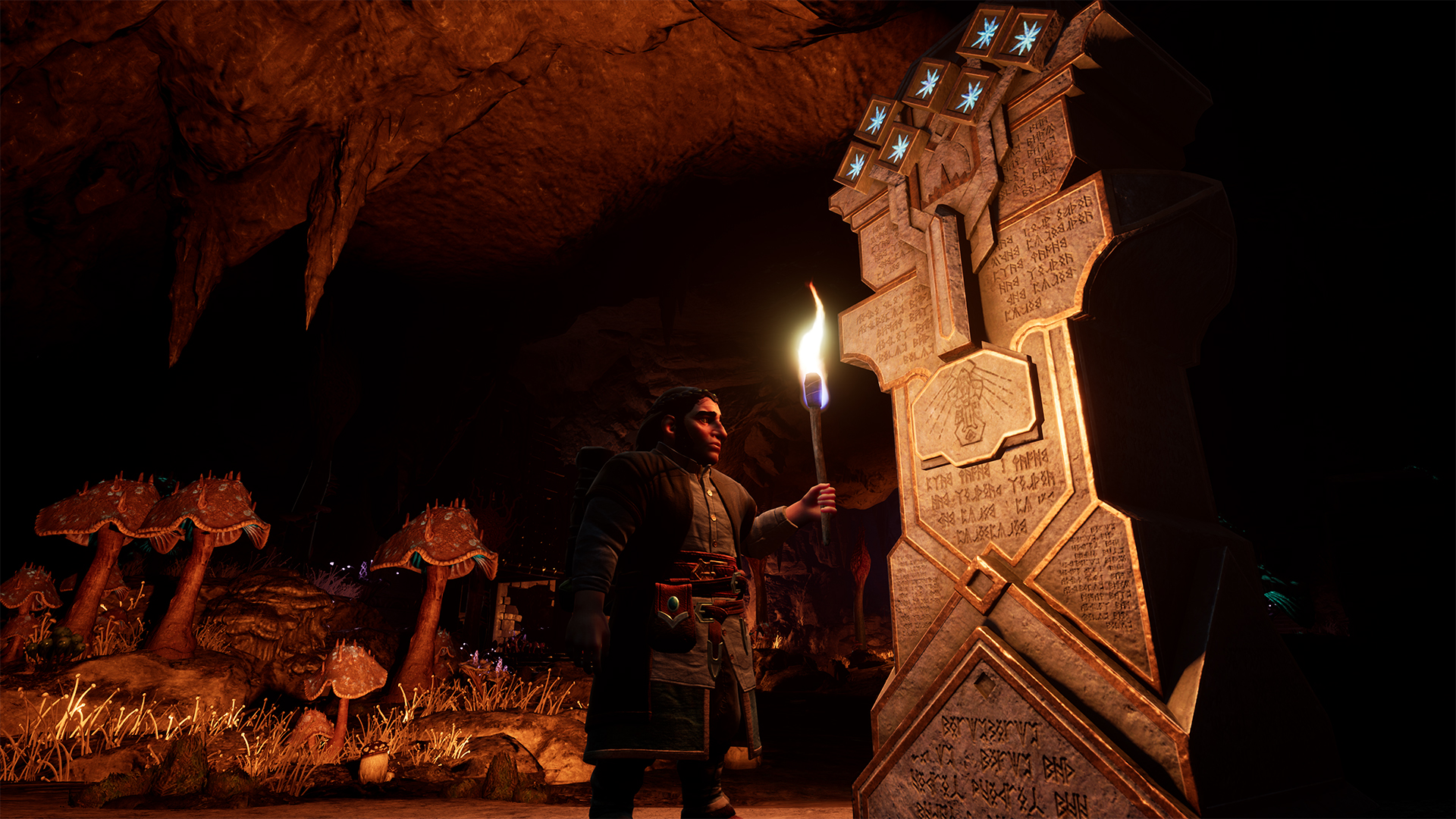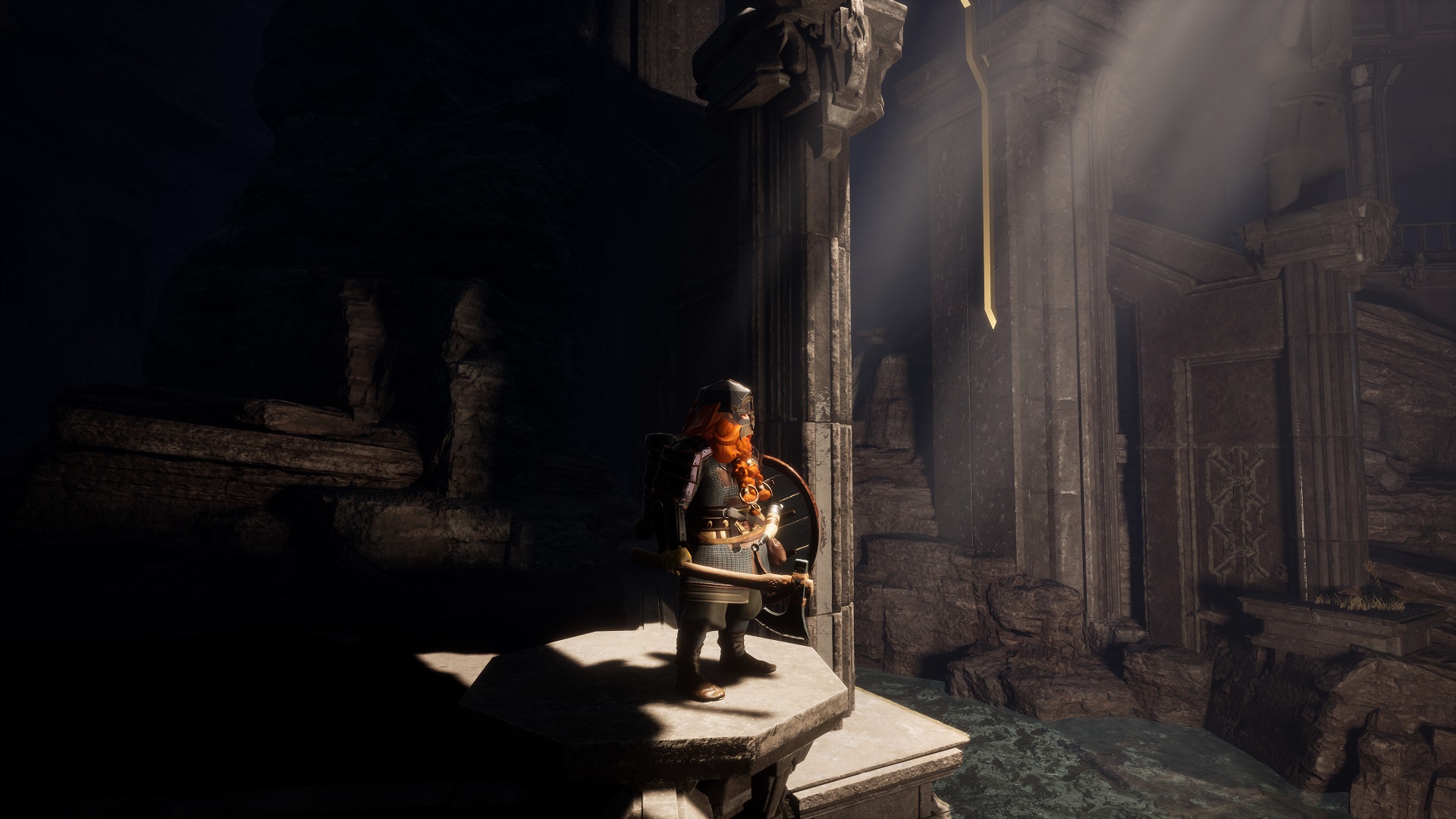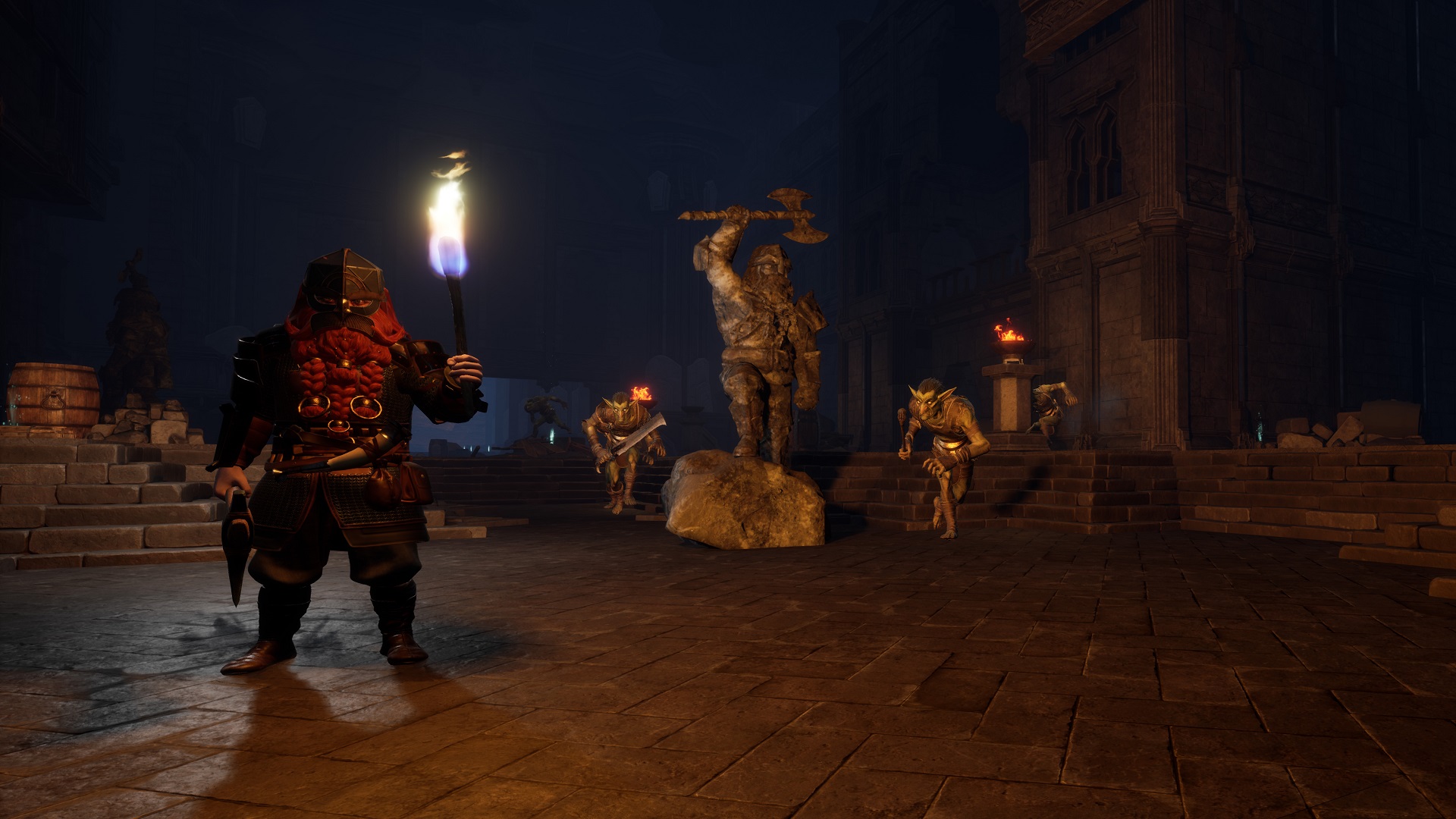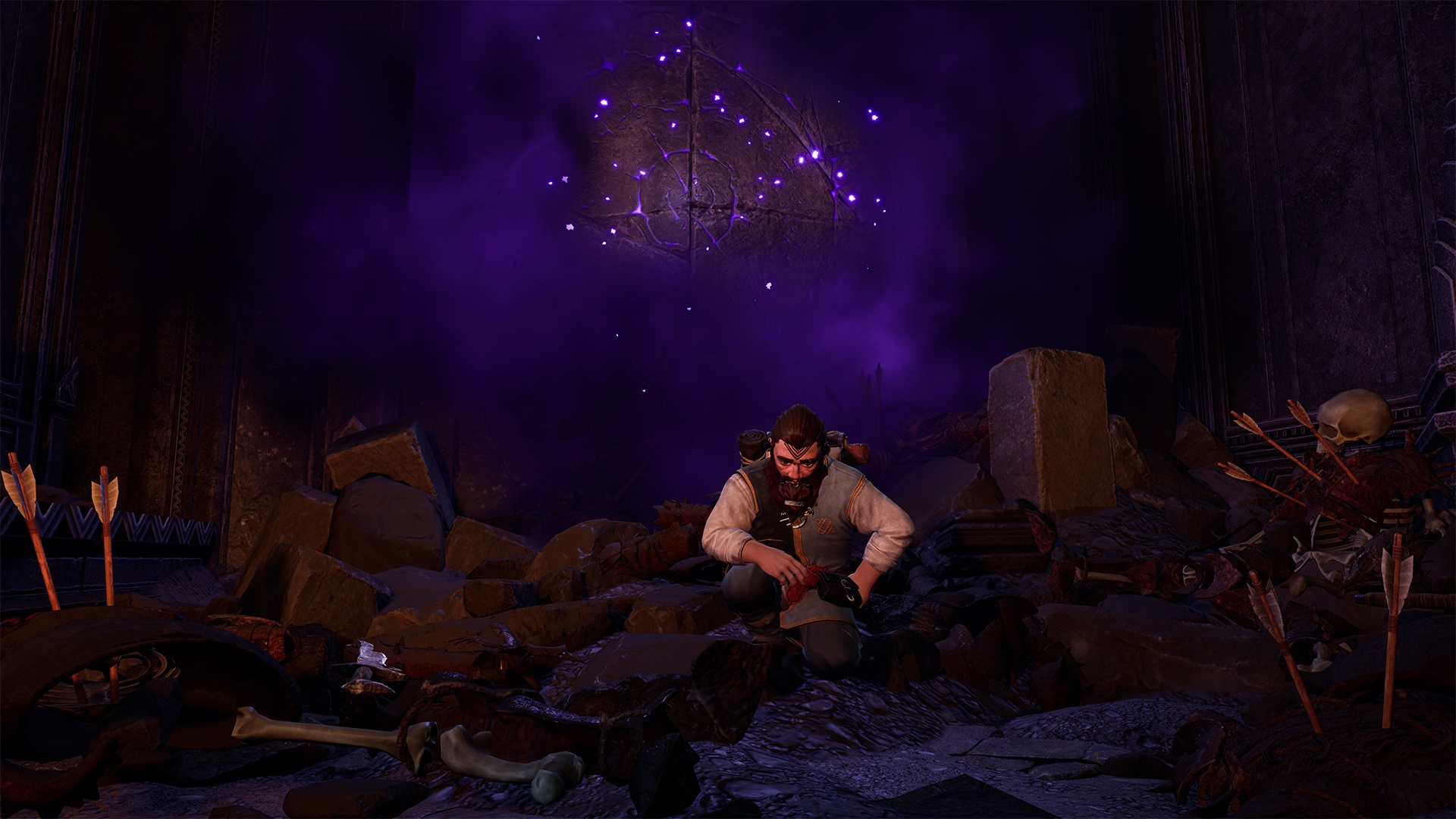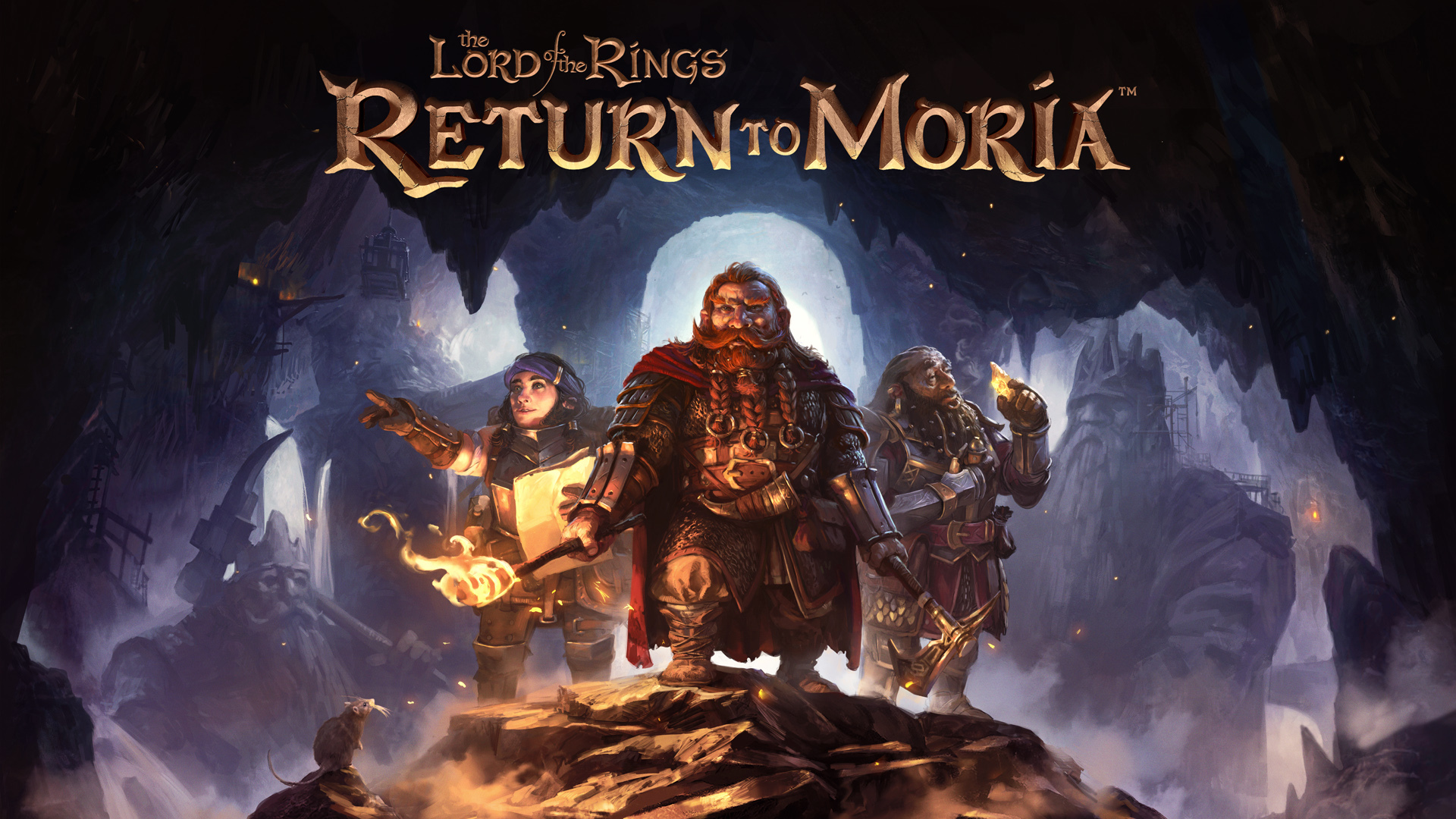
The latest video game adaptation of Tolkien’s works is The Lord of the Rings: Return to Moria, a survival crafting multiplayer game.
The words survival crafting are fear-inducing to anyone who plays video games, as they have been associated with unpolished and incomplete experiences that border on being scams.
Thankfully, there is hope for the genre, and Return to Moria shows us what a competent survival crafting game looks like. Don’t believe me? Then keep reading our full review for The Lord of the Rings: Return to Moria.
The Lord of the Rings: Return to Moria
Developer: Free Range Games
Publisher: North Beach Games
Platforms: PlayStation 5 (December 5, 2023), Xbox Series X/S (Early 2024), and Microsoft Windows (Reviewed)
Release Date: October 24, 2023
Players: 1-8
Price: $39.99
In The Lord of the Rings: Return to Moria, we play as our OC dwarfsona™, who assists Gimli and his band of dwarves in blowing up a sealed runic door. The explosion is much bigger than anticipated, and we end up getting stuck inside the mines after a cave-in.
After that, players have to make their way through the mines of Moria, surviving hostile orcs, goblins and whatever other monsters lurk in the shadows, while also getting drunk and collecting a little treasure for themselves.
The Lord of the Rings: Return to Moria is at its core a survival game. Players always need to be aware of their health, hunger, and stamina, making sure they are never too tired or too weak to fight against a goblin lurking in the shadows.
The game accomplishes the impossible and manages to deliver an experience with fantastic pacing, something that I have never seen before in such an open-ended genre. It’s impressive how the developers managed to deliver such a satisfying progression system that manages to challenge the player without being frustratingly difficult or too time-consuming.
It’s really easy to see the survival crafting genre done wrong, and I played quite a few games during the Steam Next Fest that simply didn’t understand what made it fun, so it’s really refreshing to see a title that understands what players expect from a survival game, and that manages to deliver it flawlessly.
After a very brief tutorial, the game lets you roam completely free, trusting that you’ll will figure things out for yourself. This approach makes it so players are always in charge of their progress, and makes discovering new things so much more exciting.
Of course the game leaves some breadcrumbs for the player to follow, featuring both a quest system and a very in-depth glossary, but the player is still fully responsible for their progress, which feels very satisfying.
Discovering new recipes and watching the new tier of materials click into place serves as a tangible visualization of your progress, as each new unlock comes with a substantial upgrade to either your character or your base. The game makes sure to always keep you on your toes with goblin and orc hordes, who patrol the caves and have a chance to raid your base.
Enemy raids are the game’s way of telling the player that their current tier of equipment just isn’t cutting it, and they always seem to happen at the worst possible moment, managing to deliver a tense experience every time they happen.
Combat in The Lord of the Rings: Return to Moria has a satisfying weight to it, and reminds me a lot of Valheim’s souls-adjacent combat. Players can opt for heavy two-handed weapons, one-handed weapons paired with a shield, or ranged weapons like a crossbow. The player is given multiple ways to approach combat, and all weapons have different damage types.
Unarmored enemies and small animals will take regular damage from piercing and slashing weapons, while armored enemies and tougher animals will require the player to bludgeon them instead. Each weapon has a different move set, as well as a unique charged attack, and players are encouraged to swap on the spot depending on what they need.
Hordes of orcs and goblins can grow massive, and combat encounters are always tense situations of maneuvering your way around a crowd of angry enemies. Goblins will burrow underground and pop up behind you for a surprise attack, while ranged units cower behind armored orcs while trying to get a hit in.
Enemies do a lot of damage, and most armor sets before tier 2 will break very fast. After moving through armor tiers the player has a little breathing room, but the introduction of giant enemies, like the trolls, shows that the game is always keeping up with the player.
It’s extremely fun to reach a new area and discover what types of creatures are roaming around. Clearing enemy camps rewards players with important resources, and there are even boss fights at the end of massive orc strongholds.
There’s something very satisfying about clearing out enemy hordes with friends, as you shield-bash your way out of extremely tight situations completely exhausted, hungry, and with just a sliver of health left.
This may be an unpopular opinion, but I always felt that there’s something inherently boring about playing a dwarf character in a regular game. Titles like Baldur’s Gate 3 do their best to accommodate every race, but it never feels like an authentic dwarven adventure. It’s quite clear that dwarves thrive in specific settings, like the ones seen in Deep Rock Galactic or Dwarf Fortress.
The Lord of the Rings: Return to Moria excels at bringing players into a dwarven setting, by contextualizing everything into their lore. Every building is clearly inspired by dwarven architecture, and characters in the game will start singing for inspiration while mining, celebrate with ale, or brag about killing goblins. It’s easy to see that a lot of work went into making this feel authentic.
Niche Gamer’s founder, Brandon, went through the mines of Moira with me and got very excited at all of the Lord of the Rings deep cuts and references. The game makes sure to sneak in a little quote from the books or the movies wherever it can, managing to feel like a celebration of Tolkien’s works.
The Lord of the Rings: Return to Moria is also bursting with quality-of-life features, and it’s quite clear to see that the developers have played their fair share of survival crafting games. The map, for example, is segmented into rooms which show exactly what parts connect with other locations, making it so players don’t have to rub their face on every wall looking for the way forward.
This makes exploration painless, as the map is just simple enough to be easy to read, without being frustratingly useless. Placing markers has also been made super easy, and even with a lot of points of interest marked down on your map it still doesn’t become cluttered or difficult to read.
Building and crafting items can also be done without actually having them in your inventory, so long as you have enough of the required materials inside of a chest nearby. These features may not seem like much independently, but when stacked up together they make a huge difference
The early pace of the game has you moving bases often, and thankfully they already come with broken versions of crafting stations, so you’ll only need to use a few resources to repair them and establish yourself in a new area.
This is later fixed by the game’s fast travel system, which essentially lets players establish their base anywhere and teleport around by crafting mapstones, but this shows that the developers have made sure that both the early game and endgame experiences are enjoyable in equal measure.
The Lord of the Rings: Return to Moria is pretty addictive as a survival crafting game, and reminds me of how addicted I got to Valheim. It’s a bit shameful to admit but I may have neglected other reviews/previews so I could squeeze in some extra time mining away.
If I had to complain about something, it’s probably the lack of free building around the world. The player can only craft ladders and simple wooden platforms if they aren’t near their base, which makes exploration of new areas much harder.
It’s not always that a simple wooden platform will be enough to get to a tricky spot, and it would also be nice to have the ability to set up an emergency camp when situations get too messy.
Building inside of camps is pretty good, but it’s not always that the universal grid will be in accordance to your plans. Expanding upon existing structures is possible, but it sort of looks like a patch job most of the time. These are very minor nitpicks, though, as building your own base is a very fun experience.
Overall, The Lord of the Rings: Return to Moria is an extremely solid survival crafting title, and stands proudly as one of the best Lord of the Rings games, as well as one of the best releases of 2023.
Lord of the Rings fans have been in dire need of a good game for a while, and there’s probably a joke to be made that both the best and worst releases of 2023 come from the same source material, but I’ll show some restraint, since mentioning Gollum at this point just feels mean.
Developer Free Range Games shows us just how much can be done with the Lord of the Rings property, and that a game can go a long way if its main purpose is simply to be fun.
Brandon’s Thoughts
I’ve put quite a bit of time into The Lord of the Rings: Return to Moria with my bud Augusto and honestly I could not put the game down nor did I ever want to stop playing. The Lord of the Rings: Return to Moria is a delight for LOTR fans and one of the best games made with the IP, if not one of the best games I’ve ever played.
We had many nights of mining and adventuring into the wee hours, as both progression and crafting in The Lord of the Rings: Return to Moria are simply fantastic. Whether you’re into survival/crafting games or Tolkien’s legendary story, The Lord of the Rings: Return to Moria cannot be missed. If you’ll excuse me, I have more mining to do and orcs to slay – I’m going back to Moria.
The Lord of the Rings: Return to Moria was reviewed on Microsoft Windows using a game code provided by North Beach Games. You can find additional information about Niche Gamer’s review/ethics policy here. The Lord of the Rings: Return to Moria is now available on Microsoft Windows (through the Epic Games Store). PlayStation 5 and Xbox Series X/S ports are set to release December 5, 2023, and Early 2024, respectively.
